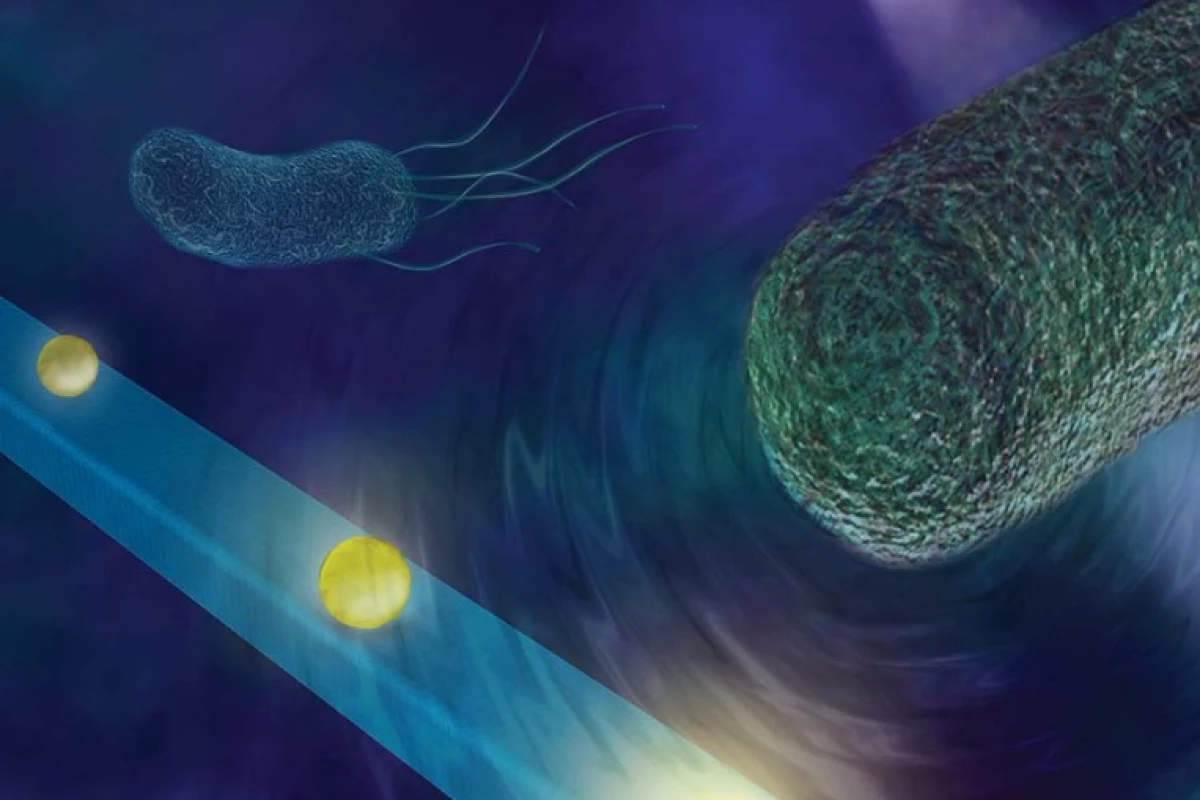With the development of a nano-scale optic fiber detector around 100 times thinner than a human hair, researchers at the University of California San Diego (UCSD) have created a tiny device so sensitive it can detect the minuscule waves produced by swimming bacteria and hear sounds a thousand times below the threshold of human hearing, such as the beating of individual muscle cells of the heart.
Created from an exceptionally narrow fiber of tin dioxide, coated with an equally delicate layer of polyethylene glycol polymer and gold nanoparticles, the researchers claim that the new device has more than 10 times greater sensitivity than a bulky atomic force microscope (AFM), with measurements capable down to 160 femtonewtons (roughly ten-trillionths of a newton: One newton is approximately equivalent to the force required to hold an apple upright on the palm of your hand).
Such sensitivity allows the device to register the swimming forces produced by live Helicobacter pylori bacteria in a solution and detect the sounds of cell movement down to -30 decibels, or one thousand times below the limit of human hearing.
"It's a mini AFM with the sensitivity of an optical tweezer," said nanoengineering professor Donald Sirbuly at the UC San Diego Jacobs School of Engineering. "This work could open up new doors to track small interactions and changes that couldn't be tracked before."
To test their device, the UCSD researchers submerged it in a solution containing cells or bacteria, and then pumped light along the length of the optical fiber where it strongly interacted with the embedded gold nanoparticles and scattered. The intensity of this scattering changed when movement forces or acoustic waves from the cells struck the gold nanoparticles, forcing them into the layer of polymer directly surrounding the fiber. These changes in intensity were then able to be detected by a conventional optical microscope, with the scientists calibrating the device to match signal intensities with distinct levels of sound or force.
"We're not just able to pick up these small forces and sounds, we can quantify them using this device," said professor Siburly. "This is a new tool for high resolution nanomechanical probing."
According to the researchers, the polymer layer surrounding the fiber was the most important factor in making the device so sensitive. Able to be compressed to different thicknesses by the tiny varying forces and sound waves created by the cells, the researchers say that the polymer layer could be "tuned" to detect larger forces by using a more rigid polymer coating, or a soft polymer such as hydrogel could be employed for enhanced sensitivity.
Future possible applications proposed by the UCSD team include the ability to discern the presence and action of singular bacterium, viewing the bonds in cells forming and fracturing, or detecting alterations in a cell's physical behavior that may indicate that it is under attack by a virus or possibly becoming cancerous. Even a micro-miniature stethoscope may be possible that is able to listen in on cellular activity inside the body itself.
To help realize these ideas, the UCSD researchers intend to improve the capabilities of their device to produce exceptionally sensitive biological stethoscopes, and further develop the acoustic response capabilities for use in new imaging techniques.
The results of this research were recently published in the journal Nature Photonics.
Source: UCSD




